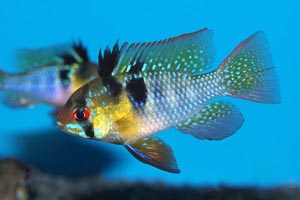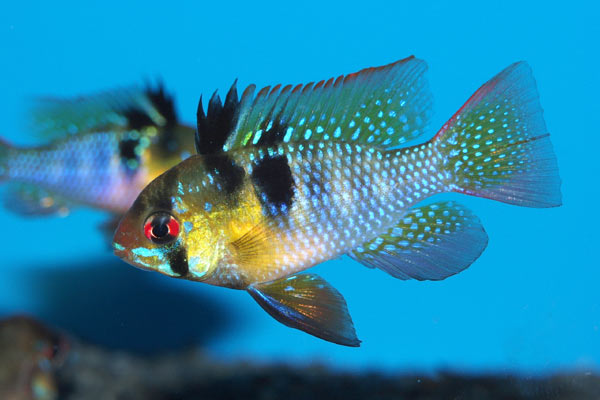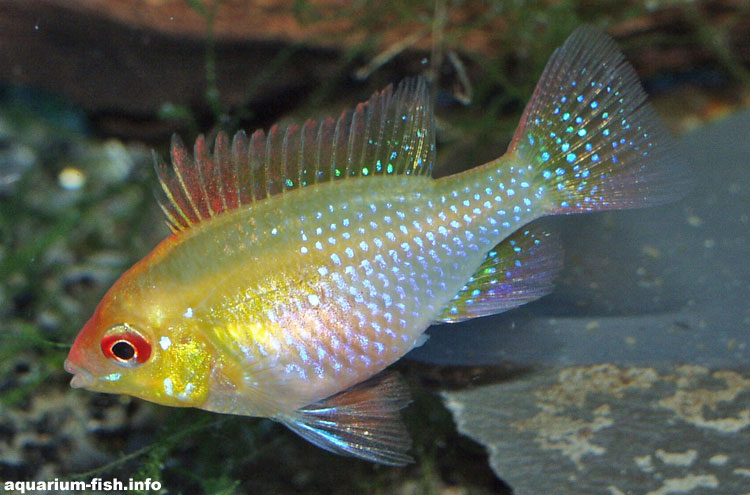

Species Profile | Images | Breeding Report | Similar Species

(Other members of the genus Papiliochromis)
ADULT SIZE: 7 cm
WATER CONDITIONS: Moderately soft and acidic
TEMPERATURE RANGE: 22-27 C
FOOD: Feed Papiliochromis ramirezi small live-foods and fine grade dried foods
DISTRIBUTION: This species comes from Colombia, Venezuela
AQUARIUM CARE: The ram is a real aquarium favourite, with its stunning coloration. They are a peacful dwarf cichlid, and should be kept with other peaceful fishes. They are not overly fussy eaters, though like all fish, relish frozen and live foods. They do best in a planted tank, with some open areas, bogwood and stones. Sometimes referred to as Microgeophagus ramirezi.
BREEDING: Breeding occurs on a flat stone, or in a pit, and is not at all unusual in the aquarium, and once hatched the adults tend their fry
Have you bred Papiliochromis ramirezi? Why not fill in a breeding questionaire?, or examine existing Papiliochromis ramirezi breeding reports
Other members of the genus Papiliochromis
Other cichlid species

Ram cichlid

The golden strain of Papiliochromis ramirezi, the golden ram
BREEDING: Breeding occurs on a flat stone, or in a pit, and is not at all unusual in the aquarium, and once hatched the adults tend their fry
Have you bred Papiliochromis ramirezi? Why not fill in a breeding questionaire?
This page summarises breeding reports provided by visitors to this site, along with some statistical analysis. Please feel free to contribute - whatever your experience!
| |||||||||
|
| ||||||||
|
| ||||||||
|
| ||||||||
|
| ||||||||
Remember, each record represents only one persons experience; if you had different results, or used different methods, please share your experiences
| Water conditions: Neutral | Water temperature: 24-27oC |
| Disposition: Active, but not aggresive | Community tank?: Yes, a good community fish |
| Spawning Method: Other (see below) | Breeding problems: Poor egg survival |
| Sex ratio: Roughly equal | Breeding difficulty: Average |
| Sucess: Average | Years Experience: 3 |
| Other Comments: | |
| Date this record created: 11th May 2009 | Breeding date: 2008 |
| Breeder: | Location: |
| Water conditions: Moderately soft and acidic | Water temperature: 24-27oC |
| Disposition: Very timid | Community tank?: Yes, a good community fish |
| Spawning Method: Long term (fry appear with adults) | Breeding problems: Poor fry survival rate |
| Sex ratio: Almost all males | Breeding difficulty: Difficult |
| Sucess: Very unsucessful | Years Experience: 1 |
| Other Comments: | |
| Date this record created: 17th January 2008 | Breeding date: 2007 |
| Breeder: | Location: |